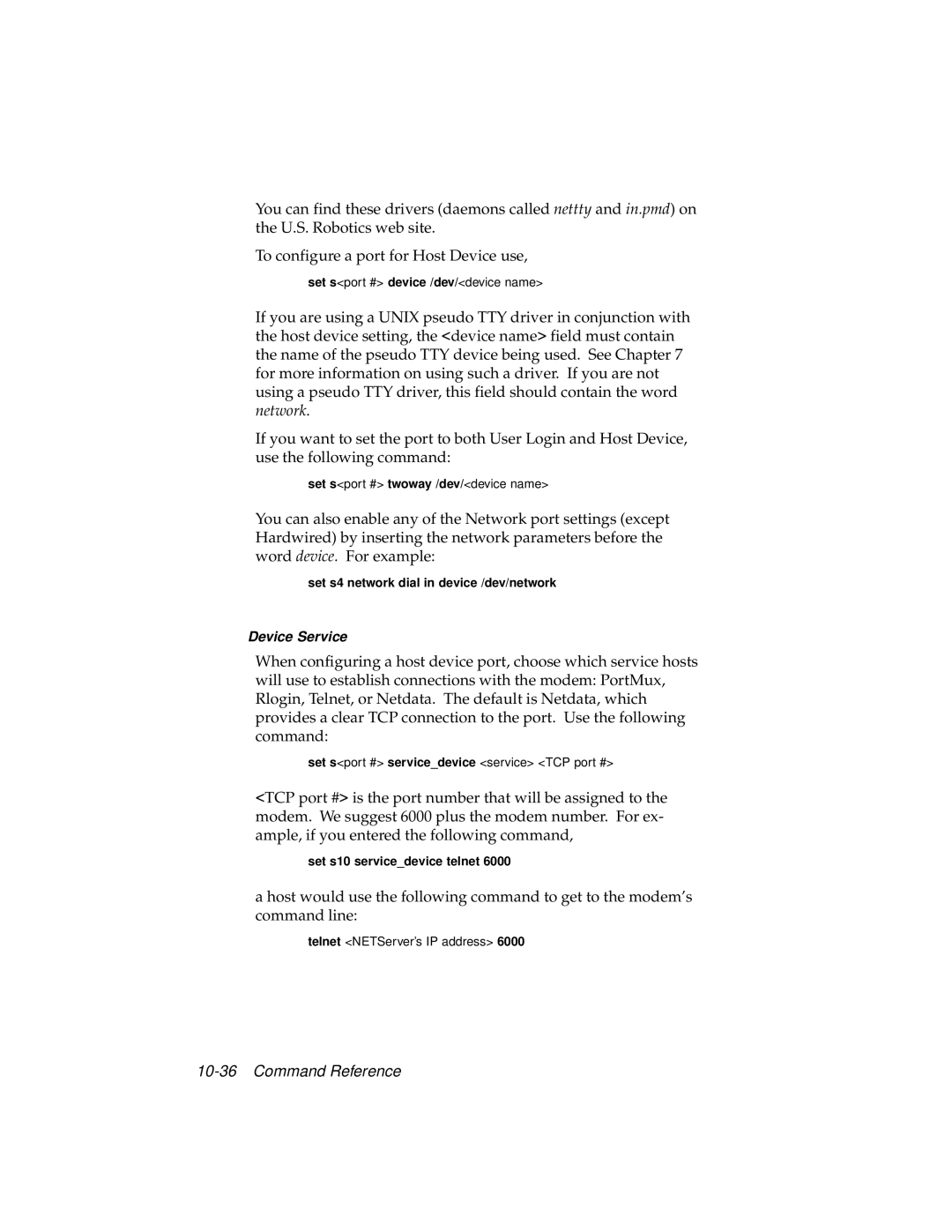You can find these drivers (daemons called nettty and in.pmd) on the U.S. Robotics web site.
To configure a port for Host Device use,
set s<port #> device /dev/<device name>
If you are using a UNIX pseudo TTY driver in conjunction with the host device setting, the <device name> field must contain the name of the pseudo TTY device being used. See Chapter 7 for more information on using such a driver. If you are not using a pseudo TTY driver, this field should contain the word network.
If you want to set the port to both User Login and Host Device, use the following command:
set s<port #> twoway /dev/<device name>
You can also enable any of the Network port settings (except Hardwired) by inserting the network parameters before the word device. For example:
set s4 network dial in device /dev/network
Device Service
When configuring a host device port, choose which service hosts will use to establish connections with the modem: PortMux, Rlogin, Telnet, or Netdata. The default is Netdata, which provides a clear TCP connection to the port. Use the following command:
set s<port #> service_device <service> <TCP port #>
<TCP port #> is the port number that will be assigned to the modem. We suggest 6000 plus the modem number. For ex- ample, if you entered the following command,
set s10 service_device telnet 6000
a host would use the following command to get to the modem’s command line:
telnet <NETServer’s IP address> 6000
